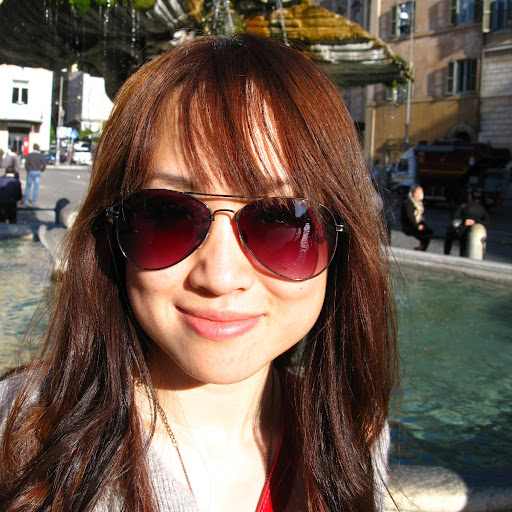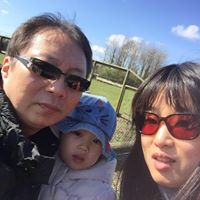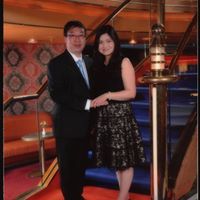Ning Jiang
age ~57
from Norman, OK
- Also known as:
-
- John N Jiang
- Phone and address:
- 2917 Misty Ridge Dr, Norman, OK 73071
Ning Jiang Phones & Addresses
- 2917 Misty Ridge Dr, Norman, OK 73071
- Seattle, WA
- San Francisco, CA
- 2501 Lake Austin Blvd, Austin, TX 78703 • 512 474-1815
- 2910 Medical Arts St, Austin, TX 78705 • 512 477-2013
- Cleveland, OK
- 2501 Lake Austin Blvd APT N206, Austin, TX 78703 • 512 923-8201
Work
-
Company:Jinan mainlink technologyJul 2008
-
Position:Software engineer
Education
-
School / High School:California State University- San Francisco, CA2010
-
Specialities:M.S. in Computer Science
Medicine Doctors

Ning Jiang
view sourceSpecialties:
Physical Medicine & Rehabilitation
Wikipedia

Jiang Ning
view sourceJiang Ning (simplified Chinese: ; traditional Chinese: ; pinyin: Jing Nng; born 1 September 1986 in Qingdao, Shandong) is a Chinese international ...
Name / Title
Company / Classification
Phones & Addresses
President
Continental Plaza Association
510 Broadway, Millbrae, CA 94030
President
Golden Harbor, Inc
510 Broadway, Millbrae, CA 94030
President
NAN HAI (U.S.A.) CO., INC
Whol & Ret Films Programs & Videos
Whol & Ret Films Programs & Videos
510 Broadway STE 301, Millbrae, CA 94030
650 259-2100
650 259-2100
Chief Information Officer
Flash Electronics
Ret Misc Merchandise · Bare Printed Circuit Board Manufacturing · Other Electronic Parts Merchant Whols
Ret Misc Merchandise · Bare Printed Circuit Board Manufacturing · Other Electronic Parts Merchant Whols
4211 Starboard Dr, Fremont, CA 94538
4050 Starboard Dr, Fremont, CA 94538
510 440-2840, 510 960-9045, 510 440-2844
4050 Starboard Dr, Fremont, CA 94538
510 440-2840, 510 960-9045, 510 440-2844
President
CHINESE CULTURE CENTER OF CALIFORNIA, INC
510 Broadway STE 200, Millbrae, CA 94030
Managing
Quinta Research LLC
Provide Analytics, Research & Software D
Provide Analytics, Research & Software D
35 Las Lomas Pl, Walnut Creek, CA 94598
Resumes

Ning Jiang San Francisco, CA
view sourceWork:
Jinan Mainlink Technology
Jul 2008 to Feb 2010
Software Engineer ASUS Technology
Jul 2007 to Jul 2008
Software Engineer
Jul 2008 to Feb 2010
Software Engineer ASUS Technology
Jul 2007 to Jul 2008
Software Engineer
Education:
California State University
San Francisco, CA
2010 to 2014
M.S. in Computer Science Nanjing University of Science and Technology
2003 to 2007
B.S. in Computer Science
San Francisco, CA
2010 to 2014
M.S. in Computer Science Nanjing University of Science and Technology
2003 to 2007
B.S. in Computer Science
Us Patents
-
Information Feeds Of A Social Network
view source -
US Patent:8145678, Mar 27, 2012
-
Filed:Aug 29, 2008
-
Appl. No.:12/201290
-
Inventors:Gary Caldwell - Redmond WA, US
Ning Jiang - Bellevue WA, US
Venkatesh Veeraraghavan - Seattle WA, US
Gail Borod Giacobbe - Seattle WA, US -
Assignee:Microsoft Corporation - Redmond WA
-
International Classification:G06F 17/30
-
US Classification:707802
-
Abstract:Various embodiments can be configured to provide a social networking computing environment. In an embodiment, a networked computing system can be used to provide informational feeds and commenting functionality to users of a social computing environment. In one embodiment, an enterprise-based social computing system can be configured to provide informational feeds to social networking application users. An informational feed can be populated with events and other information associated with one or more users of interest of an application user, but is not so limited. In one embodiment, a social computing environment can be configured to allow user commenting to feed items or events that are associated with a user or group of users.
-
Map-Centric Service For Social Events
view source -
US Patent:8467955, Jun 18, 2013
-
Filed:Oct 31, 2007
-
Appl. No.:11/980882
-
Inventors:Ning Jiang - Sammamish WA, US
Fabrice Frachon - Sammamish WA, US -
Assignee:Microsoft Corporation - Redmond WA
-
International Classification:G01C 21/00
-
US Classification:701408, 701409, 701412, 701418, 701419, 701420, 701422, 701425, 701428, 701462, 34099514, 34099519, 340988, 340989, 4554565, 455 132, 4554141, 4554561, 707999005, 707999102, 707999001
-
Abstract:A map-centric service for creating, finding, and organizing social events is described. Social events may include gatherings, goods or services for sale or other types of events about which a group of people may wish to share information. The service provides a graphical indication of the location of a plurality of social events superimposed on a map, providing a geographic context to social events. The geographic context may be augmented with text graphical indications or information in other forms, further identifying characteristics of the social event. Information about social events may be made accessible to multiple users through a web service. A user may search for social events by specifying desired characteristics of the social event. The service can also generate an optimal route for user selected events.
-
Elements Of An Enterprise Event Feed
view source -
US Patent:20090222448, Sep 3, 2009
-
Filed:Feb 29, 2008
-
Appl. No.:12/040628
-
Inventors:Gary L. Caldwell - Redmond WA, US
Ning Jiang - Redmond WA, US
Sandhya D. Jain - Redmond WA, US
Gail Borod Giacobbe - Seattle WA, US
Venkatesh Veeraraghavan - Seattle WA, US -
Assignee:Microsoft Corporation - Redmond WA
-
International Classification:G06F 17/30
-
US Classification:707 9, 707 10, 707E17032
-
Abstract:An enterprise-based social networking application. The events pool for the social networking application may be automatically populated without requiring direct individual participation in the social networking application. Furthermore, networks may be established automatically, without an expressed invitation. The default network may be based on a participant's communication history and/or organization context within the enterprise. The participant may then edit or expand the network without necessarily requesting permission for the individuals being added, and without necessarily being part of that individual's network.
-
Enterprise Social Networking Software Architecture
view source -
US Patent:20090222750, Sep 3, 2009
-
Filed:Feb 29, 2008
-
Appl. No.:12/040622
-
Inventors:Sandhya D. Jain - Redmond WA, US
Ning Jiang - Redmond WA, US
Gary L. Caldwell - Redmond WA, US
Gail Borod Giacobbe - Seattle WA, US
Venkatesh Veeraraghavan - Seattle WA, US -
Assignee:Microsoft Corporation - Redmond WA
-
International Classification:G06F 3/048
G06F 15/173
G06F 15/16 -
US Classification:715767, 709224, 709203
-
Abstract:An enterprise-based social networking application. Events for individuals may be collected from various enterprise-based information systems automatically using adaptors that are specially tailored for particular types of information systems. Such events may then be used to populate event feeds regarding individuals in that enterprise. A filtering model for formulating event feeds identifies events by individual, event type, and event time. The filter also identifies which individuals are in which group of a participant, and identifies which groups correspond to which event types. Incoming events may then be filtered into the event feeds depending on the group to which the individual belongs. A user interface for a participant to view and edit group membership is also provided.
-
Measurement And Comparison Of Immune Diversity By High-Throughput Sequencing
view source -
US Patent:20130196861, Aug 1, 2013
-
Filed:May 6, 2011
-
Appl. No.:13/696375
-
Inventors:The Board of Trustees of the Leland Stanford Junior Univeristy - Palo Alto CA, US
Joshua Weinstein - Stanford CA, US
Ning Jiang - Stanford CA, US
Daniel S. Fisher - Los Altos CA, US -
Assignee:THE BOARD OF TRUSTEES OF THE LELAND STANFORD JUNIOR UNIVERSITY - Palo Alto CA
-
International Classification:C12Q 1/68
G06F 19/18 -
US Classification:506 2, 702 19
-
Abstract:A precise measurement of the immunological receptor diversity present in a sample is obtained by sequence analysis. Samples of interest are generally complex, comprising more than 10, 10, 10, 10, 10, 10, 10, 10, 10, 10, 10or more different sequences for a receptor of interest. Immunological receptors of interest include immunoglobulins, T cell antigen receptors, and major histocompatibility receptors. The specific composition of immunological receptor sequence variations in the sample can be recorded and output. The composition is useful for predictive, diagnostic and therapeutic methods relating to the immune capabilities and history of an individual. Such predictions and diagnoses are used to guide clinical decisions.
-
Synchronizing Views During Document Presentation
view source -
US Patent:20140019858, Jan 16, 2014
-
Filed:Jul 12, 2012
-
Appl. No.:13/548149
-
Inventors:Heidi McAllister - Brier WA, US
Po Yan Tsang - Seattle WA, US
Ning Jiang - Bellevue WA, US
Kenneth Mui - Bellevue WA, US
Subalakshmi Venugopal - Bellevue WA, US
Eric Bailey - Redmond WA, US -
Assignee:Microsoft Corporation - Redmond WA
-
International Classification:G06F 17/00
-
US Classification:715273
-
Abstract:An application synchronizes views during document presentation. The application detects a selection of a section of a portion of presented content at a presenter view. The application shifts the portion of the content displayed at an attendee view to bring to focus the selection. Alternatively, the application displays the selection in a pop-out view pane within the attendee view to bring to focus the selection. The application also shifts content in the attendee view according to an offset ratio calculated from comparing a non-displayed section of a page of the document and a displayed section of a page of the document within the presenter view.
-
Measurement And Comparison Of Immune Diversity By High-Throughput Sequencing
view source -
US Patent:20210054461, Feb 25, 2021
-
Filed:Sep 1, 2020
-
Appl. No.:17/009386
-
Inventors:- Stanford CA, US
Joshua Weinstein - Stanford CA, US
Ning Jiang - Austin TX, US
Daniel S. Fisher - Los Altos CA, US -
International Classification:C12Q 1/6883
-
Abstract:High-throughput long read sequencing is used to perform immunogenomic characterization of expressed antibody repertoires in the context of vaccination. Informatic analysis allows global characterizations of isotype distributions, determination of the lineage structure of the repertoire and measure age and antigen related mutational activity. Global analysis of the immune system's clonal structure provides direct insight into the effects of vaccination and provides a detailed molecular portrait of age-related effects.
-
Measurement And Comparison Of Immune Diversity By High-Throughput Sequencing
view source -
US Patent:20210002722, Jan 7, 2021
-
Filed:Jul 16, 2020
-
Appl. No.:16/931102
-
Inventors:- Stanford CA, US
Joshua Weinstein - Stanford CA, US
Ning Jiang - Austin TX, US
Daniel S. Fisher - Los Altos CA, US -
International Classification:C12Q 1/6876
G16B 20/00
G16B 30/00
C12Q 1/6883
C12Q 1/6809
C12Q 1/6886 -
Abstract:A precise measurement of the immunological receptor diversity present in a sample is obtained by sequence analysis. Samples of interest are generally complex, comprising more than 10, 10, 10, 10, 10, 10, 10, 10, 10, 10, 10or more different sequences for a receptor of interest. Immunological receptors of interest include immunoglobulins, T cell antigen receptors, and major histocompatibility receptors. The specific composition of immunological receptor sequence variations in the sample can be recorded and output. The composition is useful for predictive, diagnostic and therapeutic methods relating to the immune capabilities and history of an individual. Such predictions and diagnoses are used to guide clinical decisions.
Plaxo

Ning Jiang
view sourceMicrosoft
Myspace
Googleplus

Ning Jiang
Work:
China United Airlines
Education:
Civil Aviation University of China
Relationship:
In_a_relationship
About:
Crazy
Bragging Rights:
On the way

Ning Jiang
Lived:
Hayward, CA
Tagline:
"I invented post-its, yeah.."

Ning Jiang

Ning Jiang

Ning Jiang

Ning Jiang

Ning Jiang

Ning Jiang

Ning Jiang
view source
Ning Jiang
view source
Ning Jiang
view source
Ning Jiang
view source
Ning Jiang
view source
(Ning Jiang)
view source
Lee Ning Jiang
view source
Ning Jiang
view sourceFlickr
Youtube
Get Report for Ning Jiang from Norman, OK, age ~57













